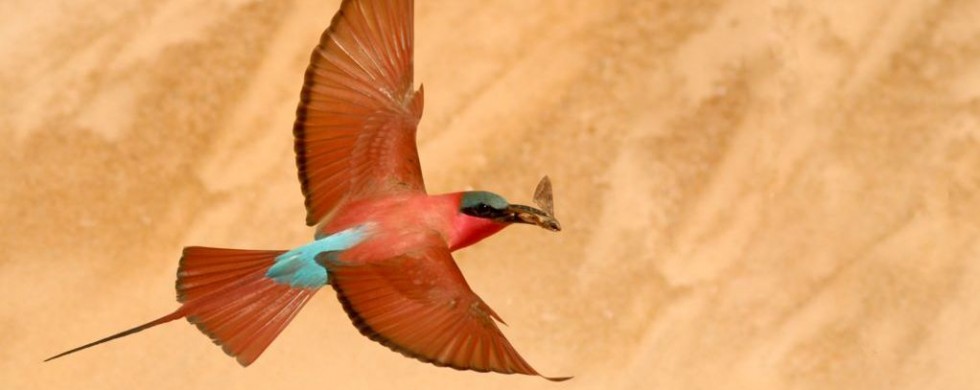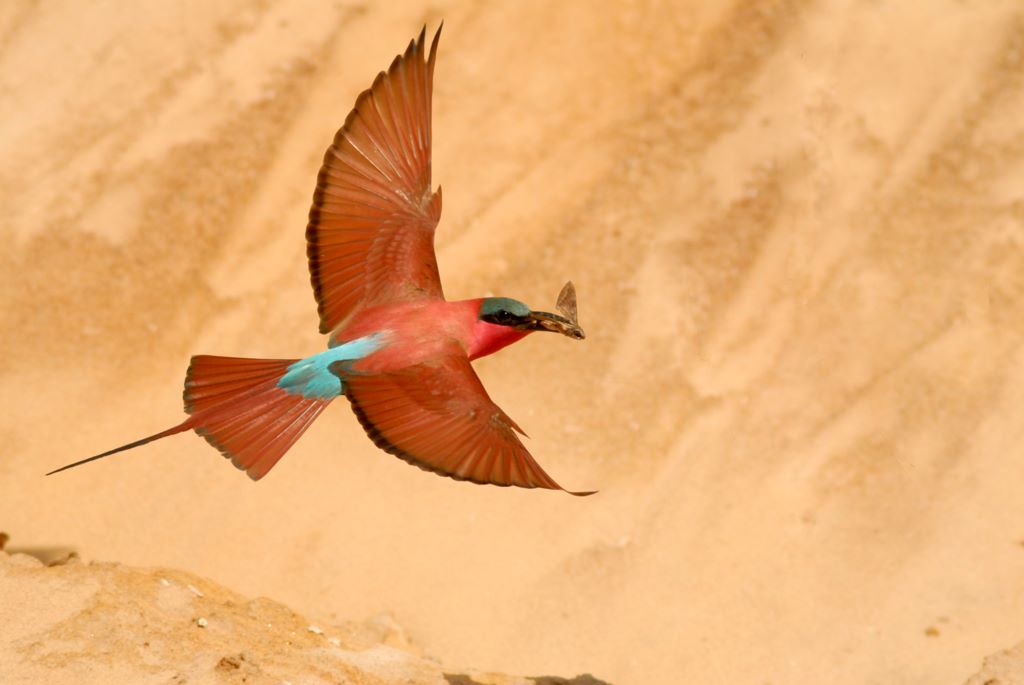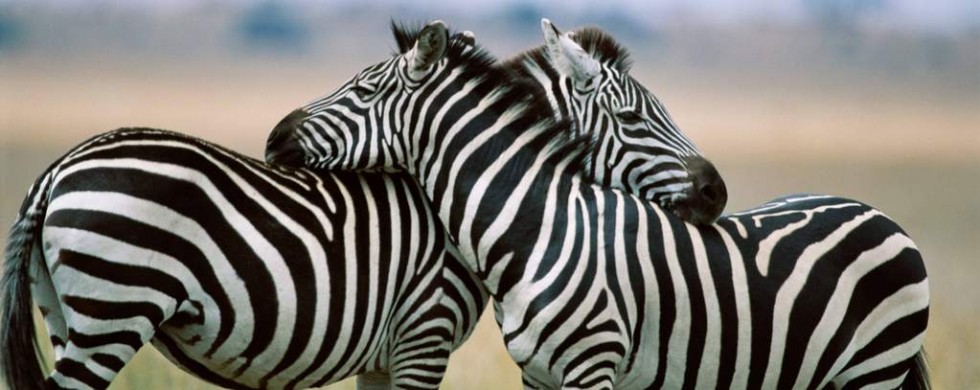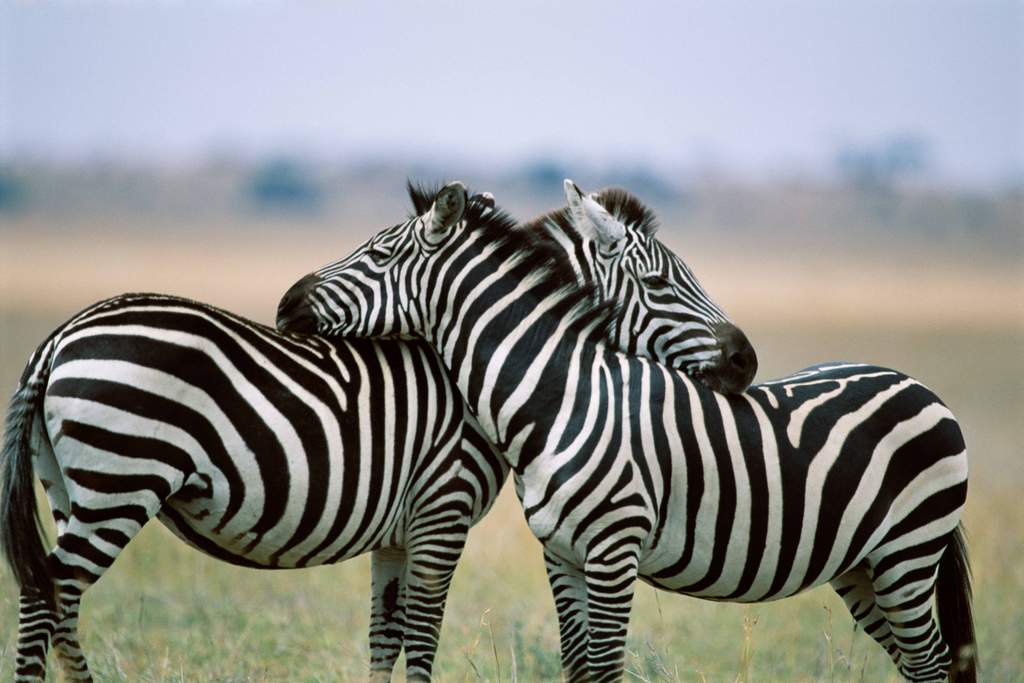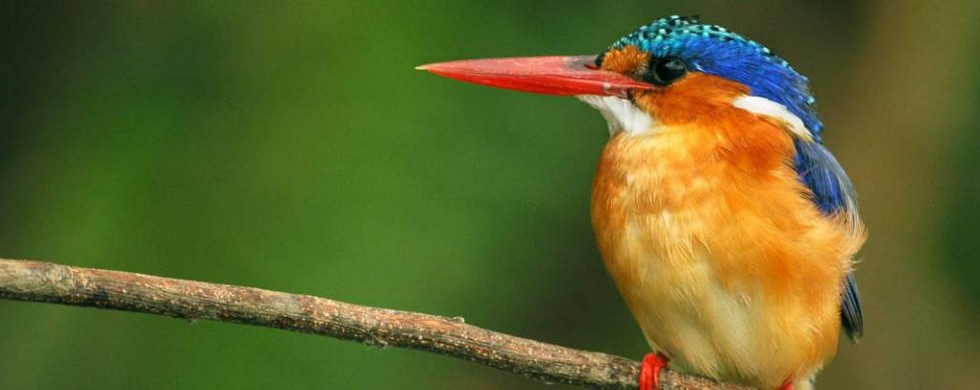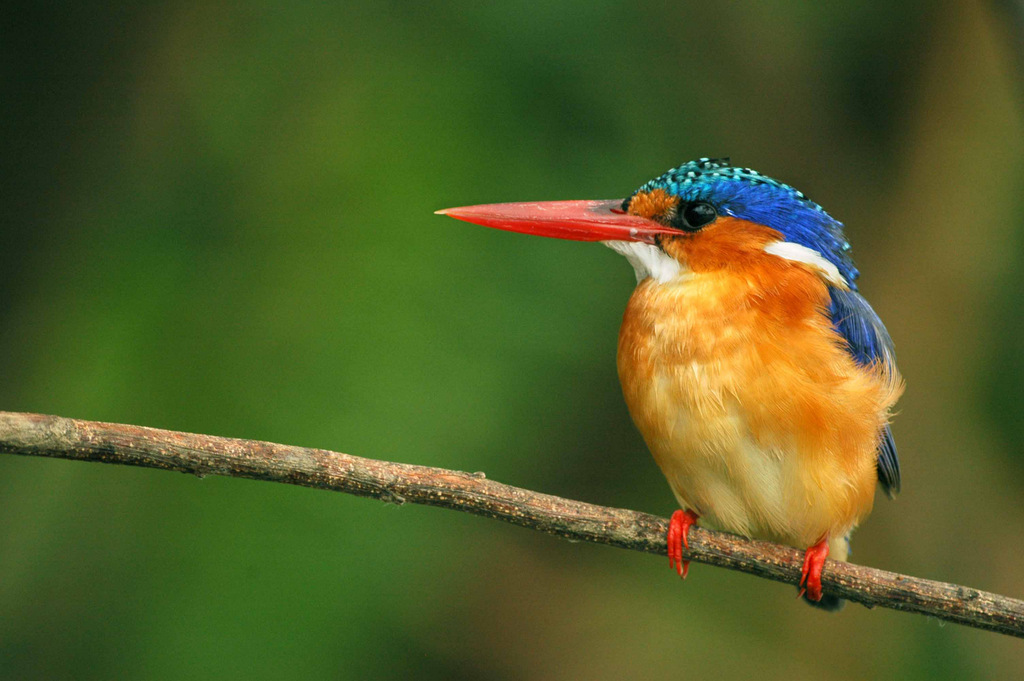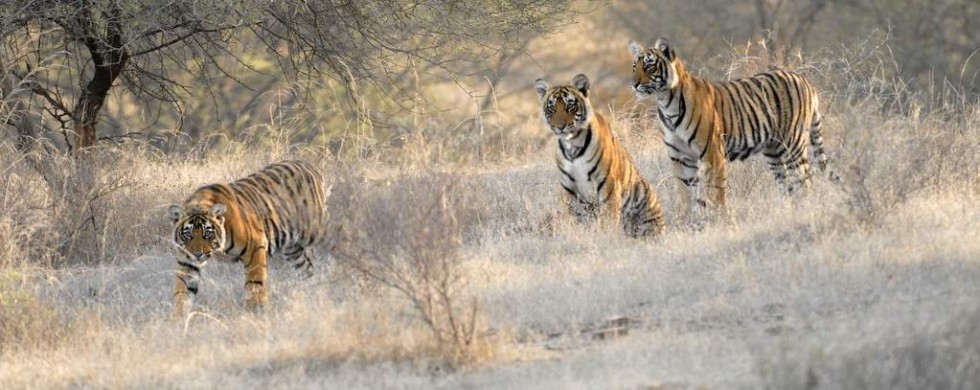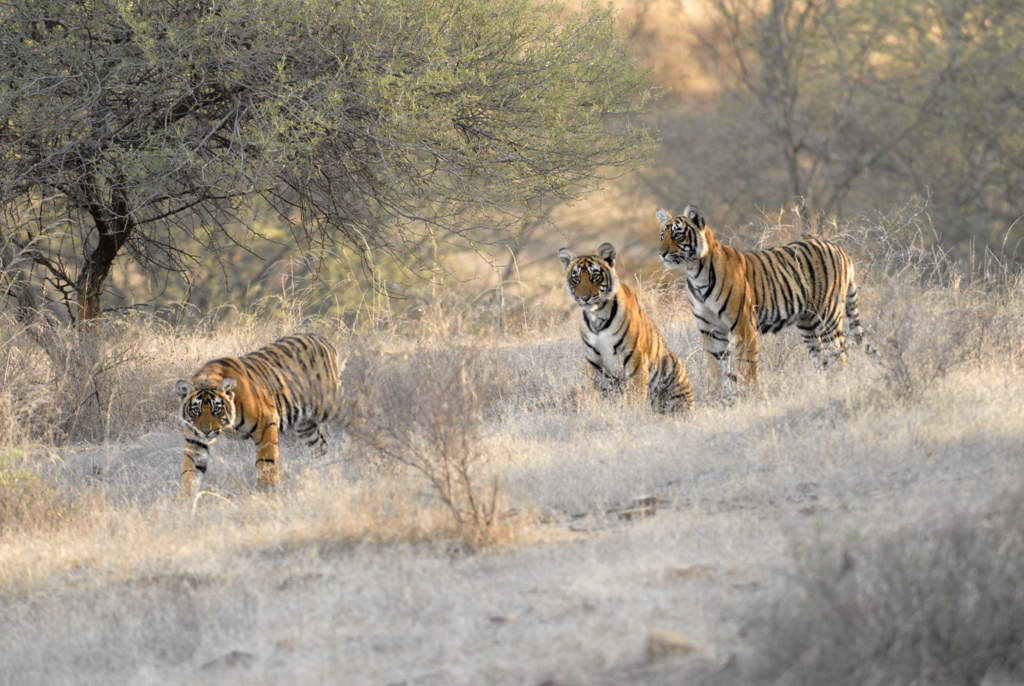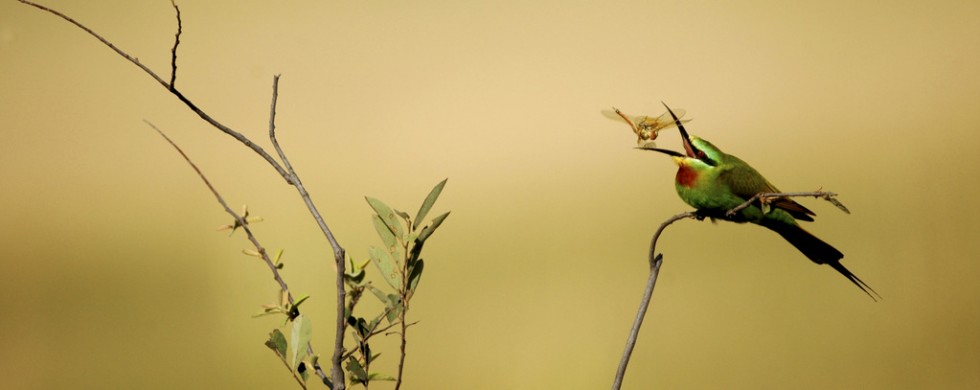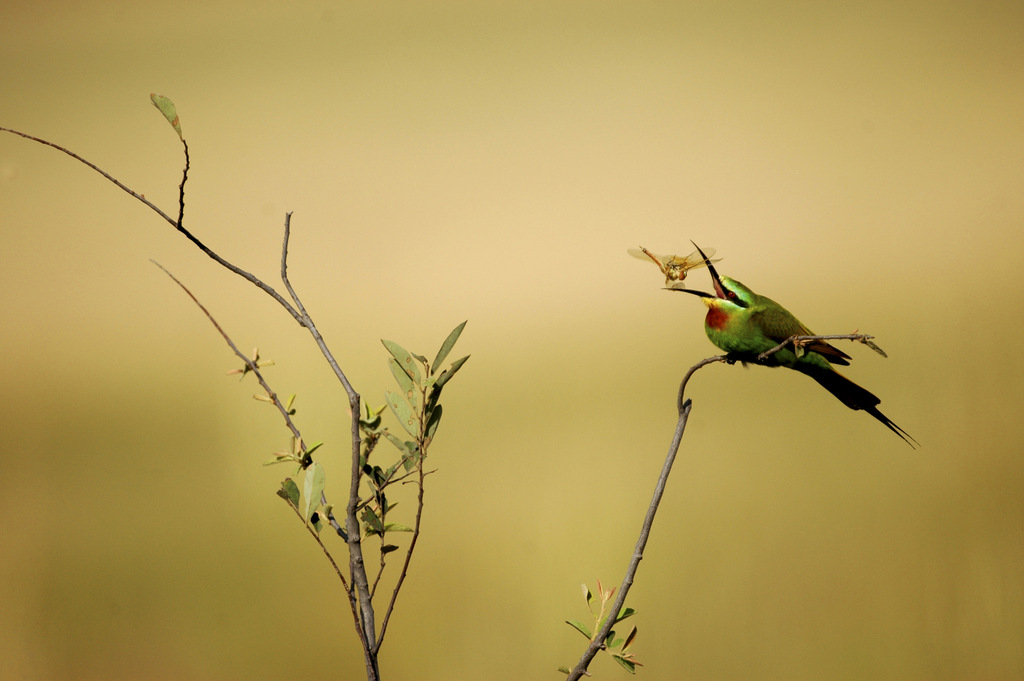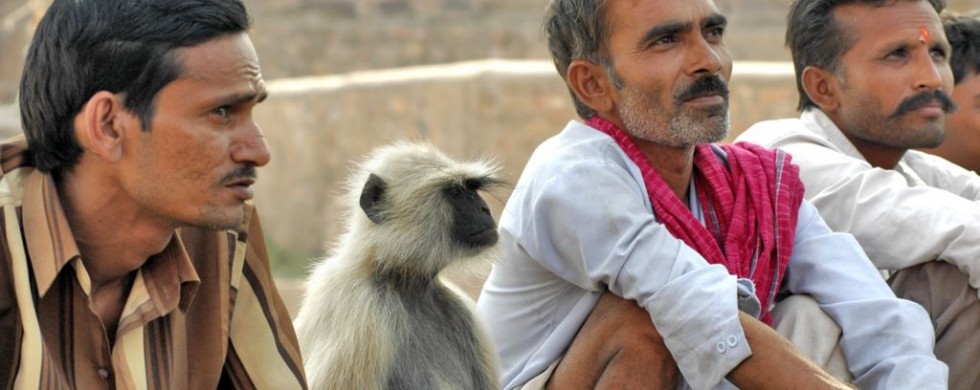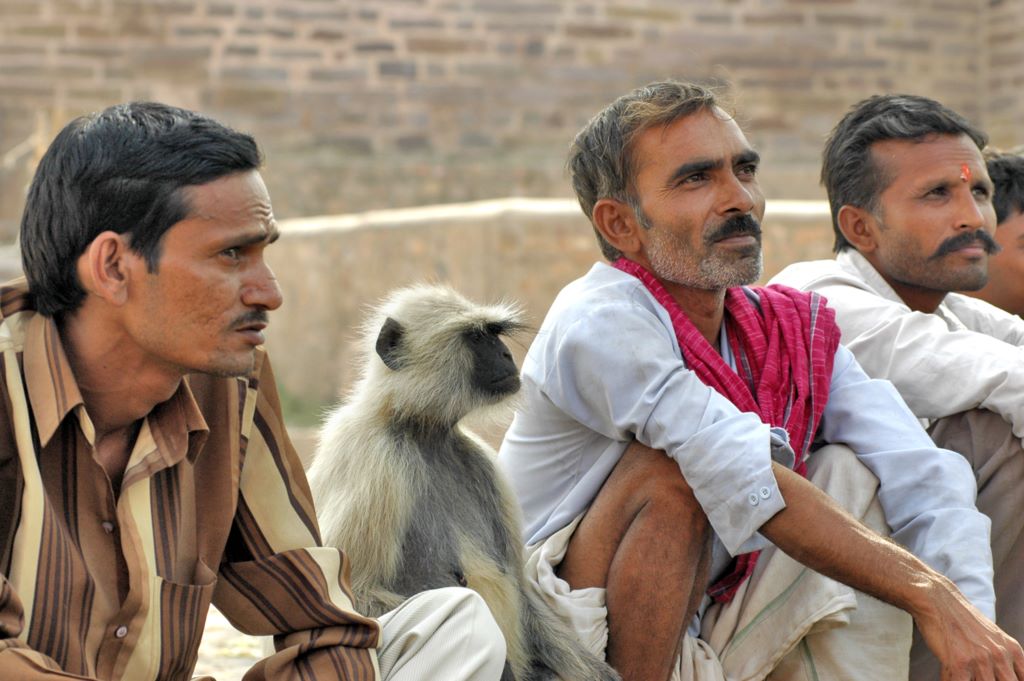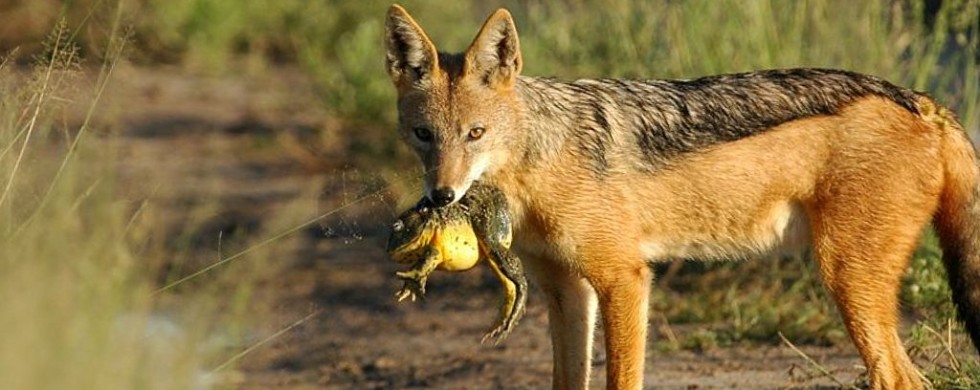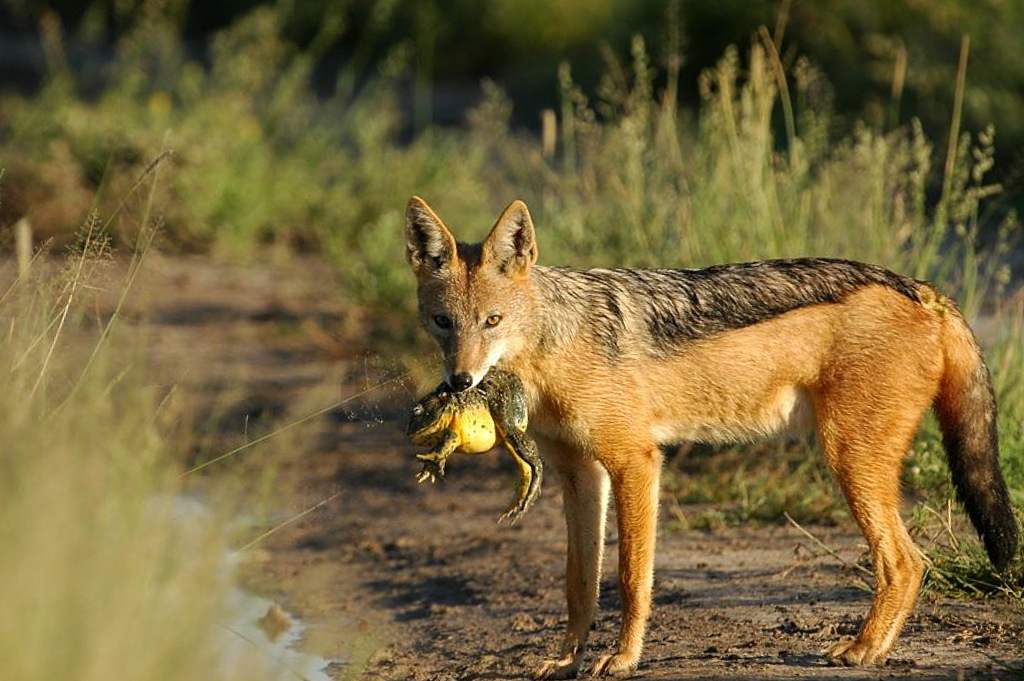15
Shot of the Month – November 2008
This month I highlight a stunner of the bird world – the Carmine Bee-eater. I love the name, and find that I cannot say it without applying a poor imitation of a Brooklyn accent (think Rocky, and replace “Adrian” with “Carmine”).
Of course, those of you with a more refined education already know that “carmine” is by definition “A strong to vivid red,” or “A crimson pigment derived from cochineal.” ( I didn’t know….)
As you can see, it is an apt name for this scarlet fellow. Carmine Bee-eaters (CBEs) can be found in east and southern Africa though I have personally only ever seen them in Botswana and Zambia.
Most shots of the CBE on my site are from a safari I took in Zambia and most have this tan backdrop—it is sand. I found a vertical sandbank along a river that was riddled with row after row of holes, which can be up to 8 feet in depth I am told, that CBEs had dug to house their next brood of chicks. They must raise their chicks quickly while the river level is low—once the rains return the sandbank will be underwater.
Each day I would drive to this spot along the river and I would get out and spend at least an hour peering down from above watching the birds come and go. I shot hundreds and hundreds of images trying to capture these speedsters as they rocketed in and out of the sand bank. CBEs are exceptional flyers and routinely catch insects out of the air. It really is no contest. Once I saw a large moth make the fatal mistake of flying near a colony of nesting CBEs. A barrage of CBEs exploded out of the battery. The moth was dive-bombed relentlessly and it was lunch in a matter of seconds. The CBE in this photo has captured a plump insect and is returning home to feed the waiting chicks.
Carmine Bee-eaters are a stunning shade of red that is accentuated in sharp contrast by a metallic-green head and aqua-blue lower back. And if you catch them just right in the light, you can see that their wings are translucent.
At times dozens of CBEs burst from the side of the river simultaneously– a startling cacophony of movement and hue – an airborne crimson tide that the mind’s eye will not soon forget.
Until next month….:-)
15
Shot of the Month – October 2008
The story behind this image is not so much about the technical challenges in getting it, there weren’t many, but rather about people’s reaction to it.
This photo is perhaps the most popular image that I have in my collection. People always respond strongly to it – most comments begin with some verbal variation of “awwwhh….”
I had seen this zebra behavior for many years but could never actually get the shot — by the time I could stop and get set up to take the photo the zebras would invariably move, raise one head, or make some other movement that would ruin that perfect symmetry.
This shot was taken in Tanzania, during a hot afternoon. With the sun high in the sky the lighting was about as bad as it can get—the light was dull and drained of color. As we came around a corner I saw that the plain was full of zebras. I immediately stood up through the open roof of the vehicle and began to scan the horizon. I knew from previous experience that zebras often displayed this behavior under these types of conditions. Within a few seconds, I saw the outline of these two zebra and quickly told the driver to stop before we got too close. I threw the bean bag on the roof of the car and quickly squeezed off a shot with my lens set at its maximum range of 800 mm. A second later the zebras moved. I took more shots but only the first one came close to the ideal. It is often like that—the first shot is your only shot.
I actually find this shot rather, well, boring. The colors are not very interesting. I just don’t find it very compelling. But this is an example where an especially powerful behavior trumps aesthetics.
People react strongly to this shot. Some give a little gasp. Others cooo. People find it highly romantic, cute, endearing, loving–you get the idea.
For the romantics in the crowd, read no further, as I am about to give away the ending. The reality is that this behavior is less about camaraderie than it is about survival. It gets tiring standing out there on the plains all day, especially during the hottest part of the day. It would be great to sit or lie down but that is very dangerous with lions, cheetahs, leopards, and hyenas on the prowl. So, zebras will stand astride resting their head on their neighbor’s back. This takes the strain off their neck while still maintaining their diligence in looking for predators. The “hug” position ensures that no predator can sneak up on them since, as each is looking in the opposite direction, together they have a full 360-degree view of the plain around them.
Zebra are actually quite ornery, ill-tempered creatures. The males especially are always nipping at each other, fighting, kicking, biting, and engaging in just about any other anti-social behavior you can imagine. In zoos, zebras typically are kept away from the other animals as they have a habit of biting off the other animal’s tails.
The zebra hug, love, or just survival? This world could definitely use a few more hugs, so let’s just keep it as our little secret.
15
Shot of the Month – September 2008
I am always striving to get the “perfect” photo that captures the essence of the subject at hand. For each type of animal, I have the image in my head and I am eternally looking for it to appear before me. This photo of a Malachite Kingfisher comes very close to that unattainable goal.
I have long marveled at this tiny burst of color with wings. They are small, fast, and usually seen only briefly, typically at far distance rendering any thought of a photo as useless. My portfolio was woefully lacking a good shot of this fellow.
Malachite kingfishers live along bodies of water, typically rivers. I rarely had an opportunity to photograph them. This shot was the highlight of a trip that I made to Zambia a few years ago. Overall the trip was not great for photography—generally, I had seen few animals, even fewer predators and I was rather depressed about it all.
At my last stop of the safari I spent a few days at a camp on the edge of the Zambezi River. The game drives were producing little so I decided to take an afternoon off and explore the river. I had seen a couple of malachite kingfishers on a previous outing and I decided to stalk them and see if I could get something worthwhile.
For the next three hours my “pilot” and I cruised slowly among the reeds looking for a flash of color. It was a cloudy day and a bit windy. I was not pleased about the dull light but it proved to be a blessing—the subdued light allowed the colors of the bird to really pop out.
So, there I was lying down in the middle of the small boat. I had several bean bags stacked up on the small metal bench I was supposed to sit on while my 300-800 mm lens rested across the bags pointing forward. When we saw a bird we would bring the boat around and head either straight for him or within a few feet of him. As we approached the bank I would have the pilot turn off the engine so we could coast in. This stopped the vibration from the motor allowing me to shoot, and hopefully made us stealthier and less likely to scare the bird away.
Crouched down in the bottom of the boat I had a very narrow angle of movement with the lens. As we got closer I would try and shift around and keep the bird in the viewfinder as long as I could. Eventually, we would slide into the bank and/or into the reeds. Sometimes the wind would blow us off course. As we approached I would be shooting feverishly, continually adjusting the focal length of the lens until I was either too close or the subject flew away.
Sometimes the wind would rock the boat or cause mini waves. The lens was always ready to detect the slightest movement and many shots were blurred. Invariably there would be plants, leaves, branches, and other obstacles between me and my quarry.
We would approach, shoot, shoot, shoot….bang into the bank…bird flies away. Repeat.
Repeat
Repeat. Repeat. Repeat….
A huge lens in a small boat on a windy day trying to shoot a very, very small bird hiding among the long leaves and reeds on the bank of a river. Not a recipe for success, but very effective in causing cramps, sore neck, watery eyes, and the assorted cursing of “un-niceties.”
It only takes one great shot to make it all worthwhile. And this is it. This image really captures the spectacular beauty of the malachite kingfisher. His stunning blue and aqua cap. And those red feet—startling. His beautiful fluffy orange chest all brought into sharp relief with a lovely green backdrop. And all this is in focus and is very sharp and crisp. Did I mention that I was using a lens that magnifies the slight hint of the possibility of movement? On a small boat? Windy?
Another small miracle—well two really: the bird itself, and getting this image.
I have learned over the years that every safari gives you something special. Sometimes it just appears before you and other times you have to try something different and be willing to adapt to the opportunities you find. And often you have to be prepared to work for it.
In this case, it worked out brilliantly.
15
Shot of the Month – August 2008
While this may not be the best shot from my last trip to India it does capture a magical sight. It is an amaaazing, air-gasping sight to see a tiger in the wild, but to see three at the same time? I must have died and gone to safari heaven.
This shot was taken in Ranthambore National Park, in the state of Rajasthan, India. Each morning we made a special effort to be among the first to enter the park. This would allow us to get as far into the park as possible before the sun got too high in the sky and maximize our chances of shooting in the “magical light” that takes place in the first 1 to 1.5 hours after sunrise. It also allowed us to put as much distance as possible between us and other vehicles. Ranthambore is a small park and the tracks are limited—once a tiger is spotted word spreads quickly and the scene can become chaotic in a hurry — less than ideal conditions when trying to photograph nature in an undisturbed state.
Within 20 minutes in the park, we found these three tiger cubs. Yes, cubs. They were about one year old and about the size of a Rottweiler dog. Tiger cubs will stay with their mother for up to two years before going off to live their solitary life. We found them sitting in the grass by themselves. Their mother left them here while she went off and hunted and patrolled her territory.
We spent about 15 minutes with the tigers undisturbed. The light was still weak so shooting was very difficult but the light had a delicate, other-worldly quality about it. The tigers were sitting on the edge of a different zone of the park than what we were assigned to that morning so we could not get any closer. Also, there was no road where they were sitting so we could not have approached even if we wanted to.
Within 30 minutes at least 10 other vehicles had arrived. Engines revving as jeeps jockeyed for the best position. Over-excited people pointing, and speaking too loudly. General chaos ensued. In spite of the mayhem, the tigers were relatively undisturbed given the distance between us and them.
I was one of the few, perhaps the only person to get any decent shots. Having an 800 mm lens comes in ever so handy at times like this.
We spent at least an hour watching the cubs explore their terrain. Play under a tree. Hide in the tall grass. It didn’t take long to see clear personalities between them. One cub was the clear leader. He was the bravest and always moved first. Another was by far the shiest and would bring up the rear and moved haltingly after his/her siblings. It was apparent that their mother had given clear instructions to not move far from a large tree that was nearby as their wandering always brought them back to the shade and cover of this spot.
I will never forget that beautiful, crisp, cool morning as the soft yellow light drained the gray from the surroundings. And the absolute electricity that ran through us when we first spotted three young tigers exploring their world.
15
Shot of the Month – July 2008
This story provides a little insight into some of the elements that are necessary in getting that “lucky” shot. This image was probably the second frame of a four-shot burst. While looking through the viewfinder I saw this behavior but I wasn’t sure if I managed to catch the action at just the right moment. Once finished shooting, I feverishly hit the review button on the back of my camera body and scrolled through the sequence of shots. As soon as the image appeared, even on the tiny 2-inch LCD screen, I knew that this might be the shot of the safari.
Once back home I was able to verify that that the shot was as good as I had hoped. Was this just a lucky shot? Well, some luck is almost always involved, but as they say, with hard work, you can create your own good luck.
How did this all happen?
Well, this is a photo of a Blue-cheeked Bee-eater (BCBE) in an area of the Kalahari Desert in Botswana. I had never seen a BCBE before this trip and I had tried for several days to get a decent shot with no success. While driving along a dirt path in an open field we spotted several BCBEs flying sorties and catching insects. Our guide told us that the birds were most likely trying to fatten up before continuing their migration. We accelerated so we could reach the point along the path that would bring us as close as possible to where the birds were flying—park rules do not allow us to go off the road so we had to hope that we could get close enough.
This is where knowledge of animal behavior comes in handy. I had seen many other types of bee-eaters in my day and I knew that when they are hunting they like to return to the same tree or shrub to eat their prey. BCBEs love to eat dragonflies and in the space of about five minutes, this bird had caught three! Early on I saw that he had perched on this shrub so while he was off hunting I set my camera up and waited for his return (hopefully). Knowing the behavior of the bird allowed me to set myself up properly and be prepared in advance for the next opportunity. From his previous “kill” I knew that he would whack the dragonfly a few times on the branch to make sure that it was dead before launching it into the air. Within a minute or two he was back with a dragonfly in his mouth.
Next, I had to make sure that I was using the right camera settings for this type of shot. For this scene I maximized the aperture—this does two key things. First, it allows for the fastest shutter speed possible to stop the action which I hoped we would see. Second, it creates a shallow range of focus — the bird would be in focus but anything in the background would be blurry — just what you want for a “portrait” like this. That great sea of yellow in the background is actually long yellow grass—the wide open aperture blurred that out and allowed the subject of the photo to pop out in contrast. I set the auto-focus to continuous mode — this setting is best for action scenes and it tells the camera to keep tracking the object and adjust the focus as necessary. Finally, the shutter was set to High-Speed Continuous — as long as I held the shutter release button down the camera would take photos. A high-speed burst of images was just what I needed to try and capture this split-second action.
Proper technique also played a big role in getting this shot. I was using a 300-800mm lens for this scene–this 22-inch, 12-pound beast magnifies the tiniest of minute vibrations–the slightest movement of the lens, of the camera, or the vehicle would create a blurred image. I used a bean bag on the roof of the vehicle to stabilize the lens, essentially using the truck as a large tripod.
Everyone in the vehicle was well versed (some would say threatened) on the importance of not moving, or even breathing heavily while I was shooting. I pre-composed the shot and pre-selected the focus point before the bird arrived. While shooting I braced my body against a seat, controlled my breathing, and gently squeezed the shutter release—all to ensure no movement of the camera.
And last, yes, a good dose of luck is always important. We were lucky to find the birds in hunting mode. We were lucky that the road came juuust close enough to allow us to get within range for a shot. The lighting was good and the backdrop for the shot was perfect.
This is one of my favorite photos and I have a 16”x24” version of it hanging on my wall. The image has an oriental feel with its minimalist design and from the hues and color palate of the scene.
Capturing the bee-eater just at this crucial moment, with the dragonfly in JUST the perfect position, in such a beautiful setting is truly a small miracle.
Lucky? Sure, but as you can see, serendipity can sometimes use a helping hand….:-)
15
Shot of the Month – June 2008
Once you know the story behind this photo, you can’t help but smile each time you see it.
This shot was taken at the entrance to the Ranthambore National Park in the Rajasthan Province of India. Ranthambore is one of the best places in the world to go if you want to see tigers in the wild. This was my third visit to this park and we had some unbelievable sightings on this trip.
At this park, you can only visit in the morning for a few hours and then all vehicles must leave to allow the animals some peace and quiet. In late afternoon you can enter the park again for a few hours to try your luck in finding the elusive tiger. There are several different entrances to the park but this one is found at the base of a fort. In the upper reaches of the fort is a Ganesh temple which attracts pilgrims from around the country. As the fort is located far from the nearest town, many worshippers cram into taxis to reach this holy spot.
In this photo, we see some of the taxi drivers waiting patiently for the worshipers to return so they can take them back to town. At this same spot, twice each day, a handful of safari vehicles sit with expectant tourists while guides complete the paperwork necessary to enter the national park.
The parking area is typically a hubbub of activity. Peacocks preen and call exotically from the nearby trees or from atop the fort ramparts. Langar monkeys are ever present–some playing in the trees while others run over, under, and into the vehicles. Pilgrims often dressed in bright, techno-color flowing outfits take water from the nearby fountain. Drivers joke with one another, safari guides share stories of tigers almost seen, and the park guards and wardens chastise, usually mockingly, the guides for some infraction or another.
But I digress. On the wall, we see a line of taxi drivers, hanging out, watching the scene. If you look closely you will see that one of the characters is not like the others. It is a langar monkey. A moment before the monkey had come up from behind the wall and tapped the guy with the red scarf on the hip, and nodded to the small space to his right. The man looked at his colleague, who shrugged nonchalantly, and slid over. The other men, domino-like, all slid down and made space for the monkey. The langar monkey jumped up and sat down with his buddies.
And that was it. No fuss, No amazement. The guy in the brown shirt made no comments, no questioning. The guys went on with their stories and conversations. The monkey sat there and took it all in.
For all parties involved, everyone acted like it was perfectly normal to have a monkey tap you and ask if he may cut in and join your group.
See, you’re smiling, aren’t you?
15
Shot of the Month – May 2008
Let me share one of my fondest safari memories.
It was a special day in the Kalahari Desert in Botswana. You would never believe that it was the desert—It was the rainy season and the desert had transformed itself into this wonderfully lush, WET, bountiful oasis.
On this day we counted 64 Black-backed Jackals! They were all in high spirits since the rains had unleashed an eruption of frogs from underneath the ground. The jackals were having a feast.
And that leads us to this photo.
We found 6 jackals running along, with one jackal carrying this massive African bullfrog. It was clear that none of the jackals really wanted this bullfrog. One jackal would put him down. Another would come over and reluctantly pick him up. Their instincts told them that they simply couldn’t leave such a meal behind. But they had soooo much food around them; they didn’t really need the bullfrog.
So we laughed and laughed as one jackal after another repeated the sequence. Pick the frog up, run a bit, and put the frog down with a look of great angst and shame.
Next!
Pick the frog up, run a bit, and put it back down.
Finally, at wit’s end, the last jackal put the bullfrog down and the pack bounded off intent to escape any further predator dishonor.
Amazingly, the bullfrog had survived the ordeal and hopped off no worse for wear.
Until next month….:-)

